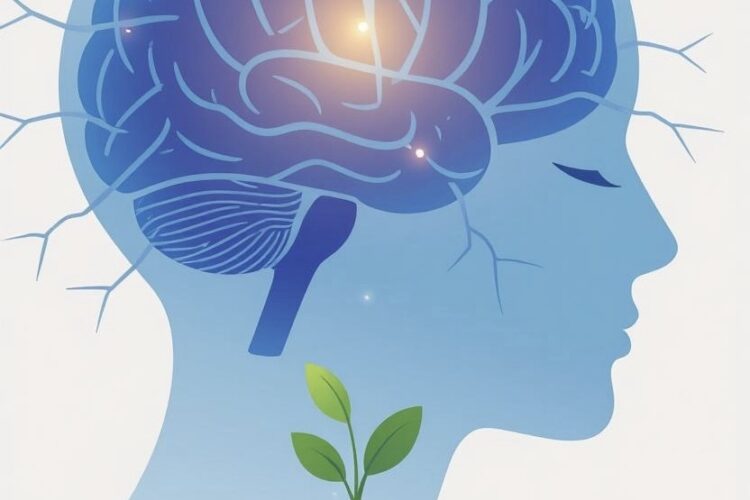Trauma reshapes the brain, prioritizing survival through changes that linger even after healing. Psychological trauma, like abuse or neglect, triggers a hyperactive amygdala, shrunken hippocampus, and weakened prefrontal cortex, leading to hypervigilance, flashbacks, and poor emotional regulation. Childhood trauma, complex trauma, racial trauma, and vicarious trauma each leave unique marks, increasing risks of PTSD, depression, and anxiety. Somatic symptoms and dissociation often emerge, while intergenerational trauma passes stress responses down. Recovery taps neuroplasticity, with trauma-informed care, mindfulness, and therapies like CBT fostering resilience and post-traumatic growth. The brain’s adaptability turns survival into thriving, proving scars don’t define us.
Long Version
Trauma, whether from a single harrowing event or prolonged exposure, profoundly reshapes the human brain. Psychological trauma—encompassing experiences like abuse, neglect, or witnessing violence—triggers a cascade of neurobiological alterations that prioritize survival over everyday functioning. This isn’t a sign of weakness but an adaptive response: the brain, in its quest to protect us, remains hypervigilant long after the threat has passed. Even after apparent healing, emotional, sensory, and memory-related pathways may never fully close, leaving individuals alert to potential dangers. Understanding these changes is crucial for mental health professionals and those affected, as it illuminates why recovery involves more than willpower—it requires addressing the brain’s rewired architecture.
Neurobiological Foundations of Trauma
At the core of trauma’s effects lies the brain’s stress response system. When faced with danger, the fight-or-flight response activates, flooding the body with hormones like cortisol and adrenaline. In cases of acute stress disorder or posttraumatic stress disorder (PTSD), this system becomes dysregulated, leading to chronic activation. The amygdala, the brain’s fear center, enlarges and becomes hyperreactive, amplifying emotional responses to triggers—even non-trauma-related stimuli like emotional faces. This heightened sensitivity contributes to hypervigilance, where individuals constantly scan for threats, often resulting in exhaustion and burnout.
Meanwhile, the hippocampus, responsible for memory formation and contextualizing experiences, shrinks under prolonged stress, impairing the ability to distinguish past traumas from present safety. This explains flashbacks, where dissociated memories intrude as if the event is recurring, causing intense psychological distress. The prefrontal cortex, which governs executive functions like decision-making and emotional regulation, also atrophies, making affect regulation—managing emotions without harm—challenging. These structural shifts, driven by neuroplasticity—the brain’s ability to reorganize itself—can perpetuate cycles of anxiety, depression, and stress.
Somatic symptoms often emerge as the body’s way of manifesting unresolved trauma, with chronic pain or gastrointestinal issues reflecting dysregulated stress hormones. In severe cases, alexithymia develops, where individuals struggle to identify or express emotions, further complicating social identity change and interpersonal relationships. Defense mechanisms, such as dissociation—detaching from reality during overwhelming moments—serve as temporary shields but can evolve into habitual patterns if unaddressed.
Diverse Forms of Trauma and Their Unique Imprints
Not all trauma is alike; its form influences the brain’s response. Childhood trauma, including adverse childhood experiences (ACEs) like abuse or neglect, disrupts early brain development, leading to thinner cortical regions tied to self-awareness and emotion processing. Higher ACE scores correlate with increased risks of depression, anxiety, and substance abuse, as toxic stress alters the nucleus accumbens and other reward pathways. Complex trauma, arising from repeated interpersonal violations, compounds these effects, fostering intergenerational trauma where parental PTSD symptoms heighten children’s vulnerability to similar disorders.
Racial trauma, rooted in systemic discrimination and historical inequities, adds layers of cumulative stress, manifesting in elevated rates of PTSD, anxiety, and depression among affected communities. Vicarious trauma affects caregivers or witnesses, such as mental health workers, who absorb others’ distress, leading to secondary burnout and emotional dysregulation. Even chronic traumatic encephalopathy (CTE), typically linked to repetitive physical head injuries, intersects with psychological trauma by exacerbating cognitive and mood disturbances, though it’s more common in contact sports or combat scenarios.
These variations highlight how trauma’s neurobiological profile spans cellular signaling to behavioral expression, with brain regions like the anterior cingulate cortex mediating emotion and self-control. Intergenerational transmission occurs through epigenetic changes, where stress responses are passed down, perpetuating cycles of vulnerability.
Symptoms: From Immediate Reactions to Long-Term Consequences
Trauma’s hallmark symptoms disrupt daily life. In PTSD, intrusive thoughts, nightmares, and avoidance behaviors dominate, often triggered by sensory cues reminiscent of the event. Hypervigilance keeps the nervous system in overdrive, contributing to somatic symptoms and psychological distress. Dissociation provides escape but can lead to derealization or depersonalization, where reality feels unreal. Emotional regulation falters, with affect regulation difficulties exacerbating outbursts or numbness.
Long-term, these changes heighten risks for comorbid conditions like depression and anxiety, altering social identity through isolation or altered self-perception. Burnout ensues from sustained hyperarousal, while defense mechanisms like denial reinforce avoidance. Yet, the brain’s adaptability offers hope: neuroplasticity allows for rewiring, turning survival instincts into strengths.
Pathways to Recovery and Resilience
Healing from trauma leverages the same neuroplasticity that entrenches its effects. Resilience—bouncing back through adaptive coping—builds via targeted interventions. Post-traumatic growth emerges as individuals find new meaning, fostering personal transformation beyond mere recovery. Trauma-informed care, which recognizes trauma’s pervasive impact, emphasizes safety and empowerment, improving emotional regulation through practices like mindfulness or cognitive-behavioral therapy.
Therapies targeting affect regulation, such as distress reduction training, help counter dysregulated responses, while ketamine-assisted treatments enhance neuroplasticity for PTSD recovery. For intergenerational trauma, socioculturally attuned approaches address racial and historical contexts, breaking cycles through family therapy. Ultimately, survival evolves into thriving: the brain, once reshaped by pain, can adapt toward growth, proving that while scars remain, they need not define us.
Hashtags For Social Media
#TraumaHealing #MentalHealthAwareness #BrainHealth #PTSDRecovery #Neuroplasticity #TraumaInformed #EmotionalRegulation #MentalHealthMatters #ChildhoodTrauma #HealingJourney #PostTraumaticGrowth #AnxietyRelief #DepressionAwareness #TraumaTherapy #MindBodyConnection #Hypervigilance #MentalHealthSupport #TraumaRecovery #BrainScience #SomaticHealing #ComplexTrauma #RacialTrauma #IntergenerationalTrauma #VicariousTrauma #ResilienceMindset #TraumaSurvivor #MentalWellness #NeuroscienceFacts #EmotionalHealth #MindfulHealing
Related Questions, Words, Phrases
how trauma affects the brain | what happens to the brain after trauma | how does psychological trauma change brain function | effects of childhood trauma on the brain | why does trauma cause hypervigilance | how trauma alters memory in the brain | what is the impact of ptsd on brain structure | can trauma change your brain permanently | how does the amygdala respond to trauma | why does trauma cause flashbacks | what are the neurological effects of abuse | how does complex trauma affect the brain | role of hippocampus in trauma recovery | how trauma influences emotional regulation | what causes somatic symptoms after trauma | how does trauma lead to dissociation | effects of racial trauma on mental health | how intergenerational trauma affects the brain | what is vicarious trauma’s impact on the brain | how does chronic traumatic encephalopathy relate to trauma | why does trauma cause anxiety and depression | how neuroplasticity helps trauma recovery | what is post-traumatic growth in the brain | how to heal brain changes from trauma | why trauma triggers fight-or-flight response | how does trauma affect social identity | what are the long-term effects of trauma on the brain | how trauma-informed care helps brain recovery | can therapy reverse trauma’s brain effects | how does stress from trauma affect the prefrontal cortex | what are the signs of trauma in brain function | how does alexithymia develop from trauma | why does trauma cause burnout | how to manage trauma-related hypervigilance | what are defense mechanisms in trauma responses






